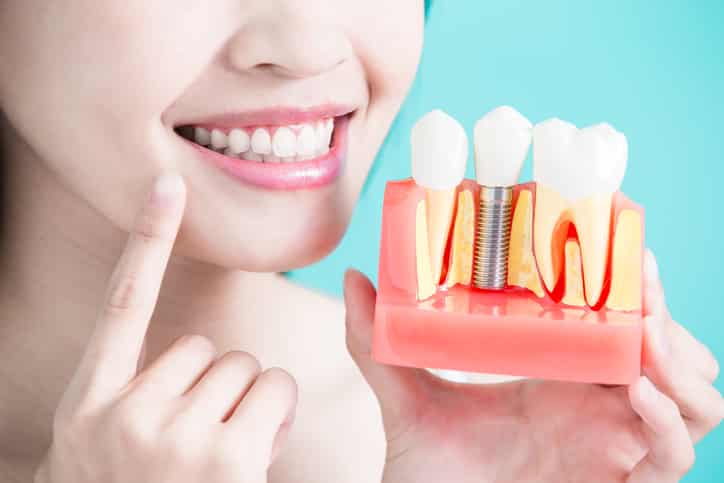If you are in need of a dental implant but you do not know exactly what to expect during the procedure, then this article is for you. Your dentist might use terms that sound like they are speaking another language, and we want to help you familiarize yourself. Here are some definitions that can help you decode dental speak so that you can understand exactly what goes on during a dental implant procedure:
Implant
The implant itself is the fixture part that is physically implanted into bone. Some people refer to this as a post, however, posts are different as they are utilized within tooth canals following root canal therapy to give internal structure to build upon. As such an implant acts as a new tooth root or foundational pillar, while a post is incorporated into an existing tooth root.
Implant Abutment
This is a middle piece connector that dentists build into or attach to the top of a dental implant. It emerges from the implant to above the gums. It engages the internal connection threads of the implant. This serves as the attachment piece to shape healing of the gum tissue with a healing abutment and can be substituted for a temporary or final connection abutment. This piece, in turn, supports a crown, bridge, or the replacement tooth and it keeps it firmly in place as a natural tooth does for traditional restorations.
Abutment Teeth
These are still existing natural teeth that support a partial denture or a bridge. The bridge is attached to the abutment tooth during an inlay/onlay or full crown preparation. For partial dentures, rests or clasps are usually used to support the denture on the abutment tooth. Dentists utilize either natural teeth as abutments or implant abutments to build upon.
Crown
A crown is a new external surface for a single tooth, and it can also be referred to as a cap. They can be linked together to span across spaces as does a bridge over water utilizing abutments as supports. If you have broken or lost a tooth due to decay, infection, injury, or other health problems, your dentist can often fit your mouth with a crown or bridge in order to replace the damaged or missing tooth or tooth structure. Crowns are typically fitted over the top of existing teeth, fortifying and replacing the missing structure, or they can also be attached to the abutment of a dental implant or also spanned across implants.
Dentures
These are traditional options that can replace missing teeth, but there are many patients that do not have the same success with dentures as they do with dental implants. There are dentures that can be removed daily for cleaning and storage purposes, while others are attached permanently to the mouth. Partial dentures can replace at least one tooth, but not the arch. These partial dentures can shift in your mouth and can cause discomfort, making it more difficult to speak, eat and smile. Partial dentures or complete dentures can utilize abutments to stabilize them. These abutments can again be natural teeth when available or implants or may use a combination.
Titanium
Most dental implants nowadays are made of titanium. This metal has a lot of advantages. Very few people have proven allergic to titanium, so it is rare for a patient to have a negative reaction to this material. It is lightweight, but very strong, thus reducing the weight on the bone or within the mouth. It also has a high affinity to oxygen, making it form a thin oxide layer when placed in the body. Titanium can ossify with the bone, which means that it can produce a stronger result that can last for many years. Titanium is also commonly utilized for the connecting abutment.
Zirconia
Zirconia is considered a fortified ceramic. It has become a widely utilized material in dentistry due to being a strong readily white option. A white base can offer more esthetic options when trying to make replacement structure look more natural. Metallic colors often require masking layers to give a natural appearance when esthetics is of importance so white bases can allow for more translucent natural covers. This material is commonly utilized now in crowns and bridges, supporting abutments in esthetic zones, and has even been implanted as the implant fixture itself although has limitations.
If you have other questions or concerns about dental implants, feel free to reach out to the dental experts and professionals here at Acadia Dental. We hope to hear from you soon!



